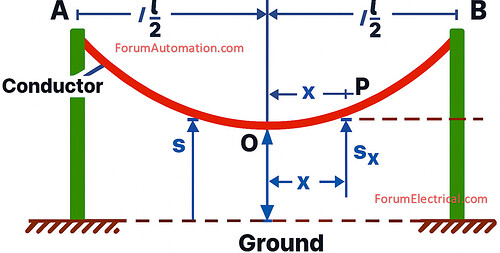What is Sag in a Transmission Line?
Sag in a transmission line is the vertical distance across the highest point of support (such as a tower) & the lowest point of a conductor hung between two supports. This occurs when the conductor’s weight leads it to curve downward due to gravity resulting in a catenary curve (or a parabola in practical circumstances with low sag relative to span).
Sag is necessary for preventing mechanical stress on the conductor.
- Allows for thermal expansion as temperatures rise and fall.
- Provides protection against wind, ice load & swings.
- Provides mechanical strength & safe clearance from the ground.
Sag and tension are inversely proportionate, therefore there is a balance between the two.
You can also follow us on AutomationForum.co, Facebook and Linkedin to receive daily Instrumentation updates.
You can also follow us on ForumElectrical.com , Facebook and Linkedin to receive daily Electrical updates.
